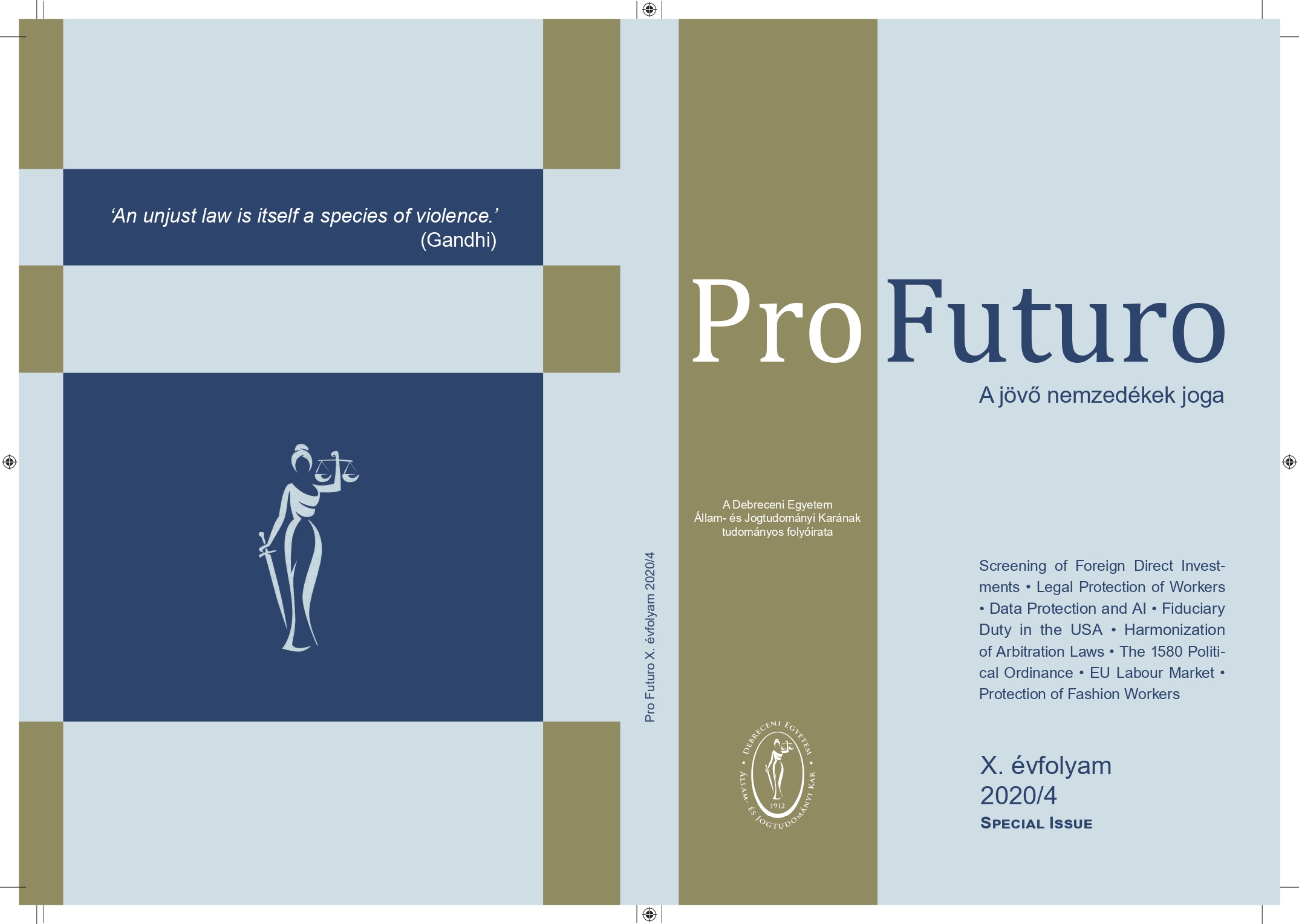The Nature of the EU Labour Market and Its Regulations
Szerző
Megtekintés
Kulcsszavak
Licenc
Copyright (c) 2021 Pro Futuro

This work is licensed under a Creative Commons Attribution-ShareAlike 4.0 International License.
How To Cite
Absztrakt
A munkaerőpiac szabályozása a munkaerő-vándorlás megelőzése érdekében könnyen protekcionistává válik, ezzel megsértve a migráns munkavállalók jogait. Jelen tanulmány a migráns munkavállalókkal kapcsolatos munkaerő-piaci szabályozások szerepére összpontosít az EU-ban, de kitér a munkaerőpiaci szabályozások általános jellemzőire is. A munkaerőpiaci szabályozások értékelése során egy ilyen típusú szabályozás „ereje” tipikusan attól függ, hogy mennyiben védik az államok a migráns munkavállalók alapvető jogait. Az EU-ra jellemző munkaerő-vándorlás világviszonylatban is jelentősnek számít, ez pedig hatékony munkaerőpiaci szabályozást tesz szükségessé a felmerülő nehézségek kezelése céljából. Minderre tekintettel jelen tanulmány az EU legfontosabb munkaerőpiaci szabályozásait és politikáit dolgozza fel, különös tekintettel az aktív munkaerőpiaci eszközökre és megoldásokra.
Labour market regulation to prevent labour migration easily becomes protectionist, thus violating the rights of migrant workers. This paper focuses especially on the role of the labour market regulations relating to migrant workers in the EU. General labour market regulations will be analysed in the first section. When we talk about the labour market, the regulations will be assessed as to whether they are strong or not and to what extent the workers will get their rights protected. EU labour migration is large around the world and can be handled with labour legislation and the labour market. Therefore, EU labour market regulations and policies, especially active labour market policies, are analysed in this paper.


 https://doi.org/10.26521/profuturo/2020/4/9467
https://doi.org/10.26521/profuturo/2020/4/9467